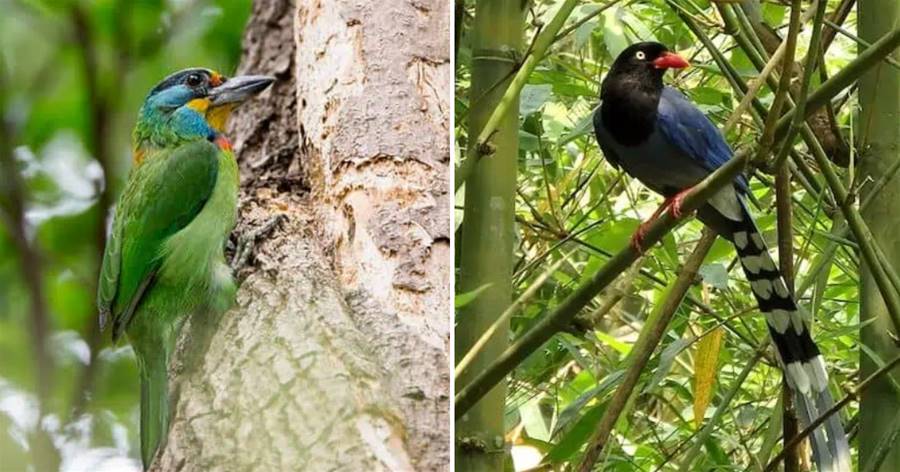

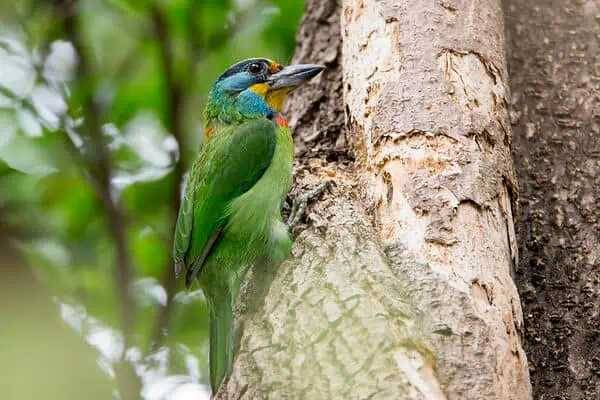
Scientific name:
Lives in: Taiwan
The plumage of this bird is one of the features that make it so exquisitely beautiful and unique. Its plumage is mostly green, and it has a yellow throat and forehead and a yellow-greenish belly. Its lower malar and ear-coverts are blue and there is a blue and red band on its chest. They can be found in gardens, forests and parks, and their sounds range from a croak to bubbing hoots.
Fun fact about Taiwan barbets: Its name translates to “five-colored bird” in Chinese and it is known as the “spotted monk of the forest” in Taiwan.
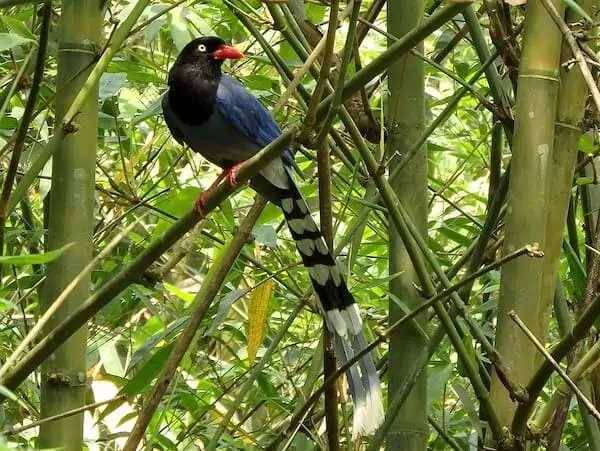
Scientific name:
Lives in: Taiwan
A striking bird with a blue body, dark head, , legs and feet, and an extra long tail with white-tipped feathers. Taiwan blue magpies are considered to be scavengers and are omnivorous. They sometimes forage in small flocks and feed on insects, small rodents, snakes, carrion, fruits, seeds, and chicks from other birds.
Fun fact about Taiwan blue magpies: They often store food on the ground and cover the food with leaves. They may return later to retrieve their food.

Scientific name:Baeolophus bicolor
Lives in: eastern United States
These little birds are very common at feeders and in backyards within their range. Like cardinals, they have a small crest (mohawk) that helps you tell them apart from other birds. Titmice are silver-gray on top and lighter on bottom, with a black patch just above their beaks and buffy orange on their sides.
Fun fact about Tufted Titmice: While the titmouse nests in tree holes, they can’t create these holes on their own and use old woodpecker holes.
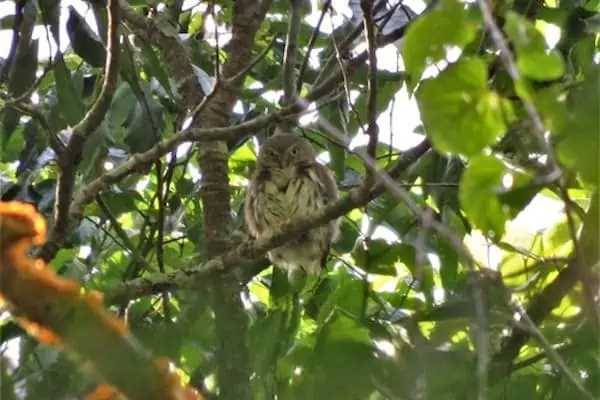
Scientific name:
Lives in: northeast Mexico
The Tamaulipas pygmy owl used to be considered birds of “least concern” but their numbers are fast declining due to deforestation. The population is estimated at 50,000 and the owls are now considered near-threatened. They are heard more often than seen, giving their hooting call at any time during the day.
Fun fact about Tamaulipas pygmy owls: Often considered a solitary bird, they may live alone or in pairs and during the breeding season as a family.
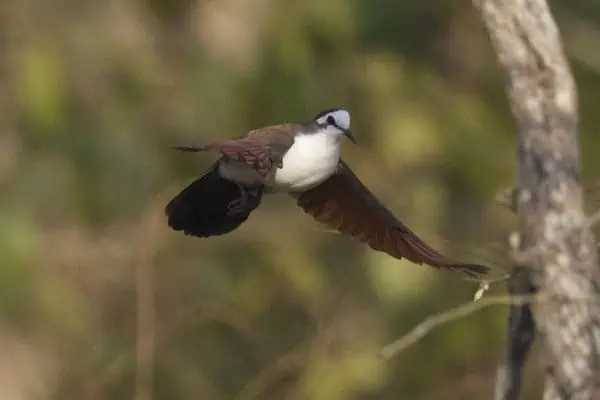
Scientific name:
Lives in: Senegal, Ethiopia, Kenya, South Africa
These doves have a brown back with a white chest, belly and face. Most often found in thickets, moist woodland, rainforest and plantations. They prefer to stay a bit hidden in the thick understory and are often seen on the ground. Eggs are incubated by the male and female. Chicks hatch in roughly two weeks and it takes an additional two weeks for chicks to mature to fledgling status.
Fun fact about Tambourine doves: Tambourine doves love to eat seeds from the castor oil plant but also feed on other seeds and small fruit. ADVERTISEMENT
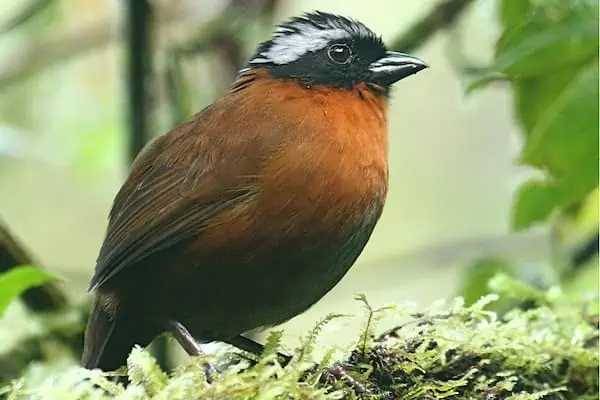
Scientific name:
Lives in: Columbia, Ecuador
Interestingly, their name is deceiving as the bird is neither a Tanager nor a Finch, but recently moved to the category of “new world bunting”. Their habitat is tropical and subtropical moist montane forests. The tanager finch has a chestnut brown body, black head and white head stripes. Sadly, these birds are threatened due to habitat loss.

Scientific name:
Lives in: Tanimbar Islands archipelago in Indonesia
Tanimbar corellas are small, white parrots. There have been various scientific studies conducted on the behavior of these birds. The studies found that these birds are highly intelligent and that they developed while in captivity. Their populations are declining in their native range on the Tanimbar islands, however they have also been introduced and established in Taiwan, Singapore, Puerto Rico and Japan.
Fun fact about Tanimbar corellas: Further studies conducted by several universities determined that these birds were able to solve complex mechanical problems.
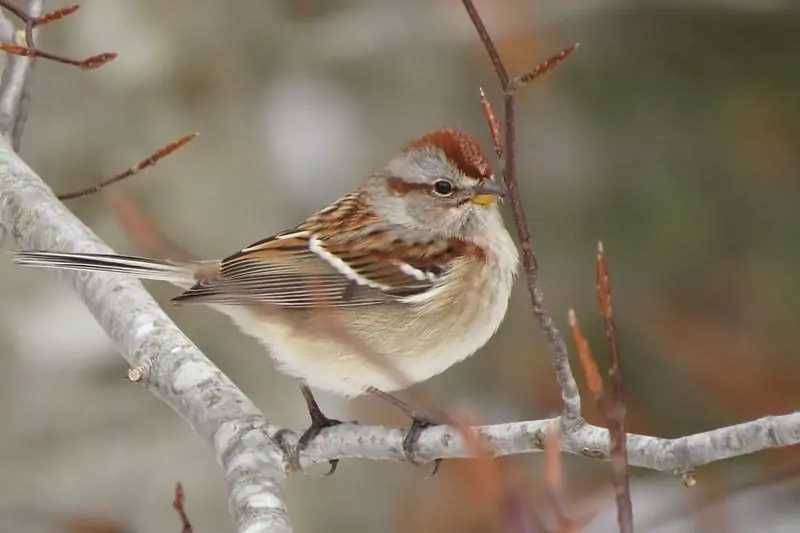
Scientific name:
Lives in: United States and Canada
American tree sparrows breed in the far northern tundras of North America, then migrate quite a distance down to spend the winter in the northern half of the U.S. and southern Canada. Identifying features of this sparrow are its slightly rounder shape, rusty cap, and bicolored bill that is dark on the top half and yellow on the bottom half.
Fun fact about tree sparrows: European settlers in America thought these sparrows looked very similar to the Eurasian tree sparrow, thus giving it its name. However they actually behave differently and are more ground birds, that look for food and even .
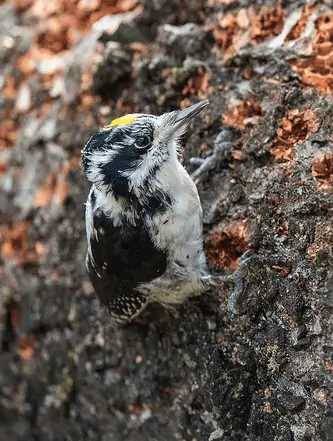
Scientific name:
Lives in: Across most of Canada and Alaska, along Rocky Mountain corridor
These woodpeckers have a black back with the center of the back barred black and white, underparts white, flanks barred black and white. Males have a yellow spot on their forehead while females do not. Most woodpeckers have four toes – two pointing forwards and two backwards. However as its name suggests, this woodpecker only has three toes and they all point forwards. Instead of doing heavy drilling into trees to find their food, they prefer to flake off the bark with their bills. Typically stick exclusively to dead or dying trees.
Fun fact about three toed woodpeckers: The three-toed woodpecker breeds farther north (upper Canada into Alaska) than any other woodpecker.
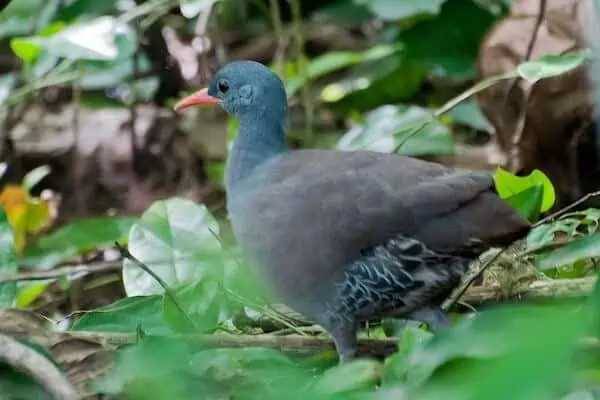
Scientific name:
Lives in: South America
The Tataupa tinamou can be found in dry forests located in tropical/subtropical areas of southwestern South America. Alternatively, they can also be found in lowland moist forests. Their diet consists of fruit which they gather from the ground or from low-lying bushes. Other food that they enjoy to eat include leaves, flower buds, seeds, and roots.
Fun fact about Tataupa tinamous: Males are responsible for incubating eggs.
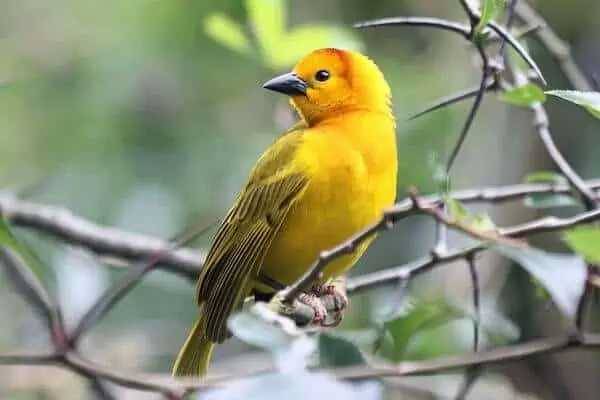
Scientific name:
Lives in: Kenya, Tanzania
Due to their vibrant yellow coloring, it’s no surprise these birds are also known as the Taveta golden weaver. The males are craftsmen when it comes to building, weaving intricate and extravagant nests. The nests are attached to stems of grass/reeds, and are usually built over water.
Fun fact about Taveta weavers: They are known as songbirds, but, according to past observers, these sounds are not pleasing to listen to.
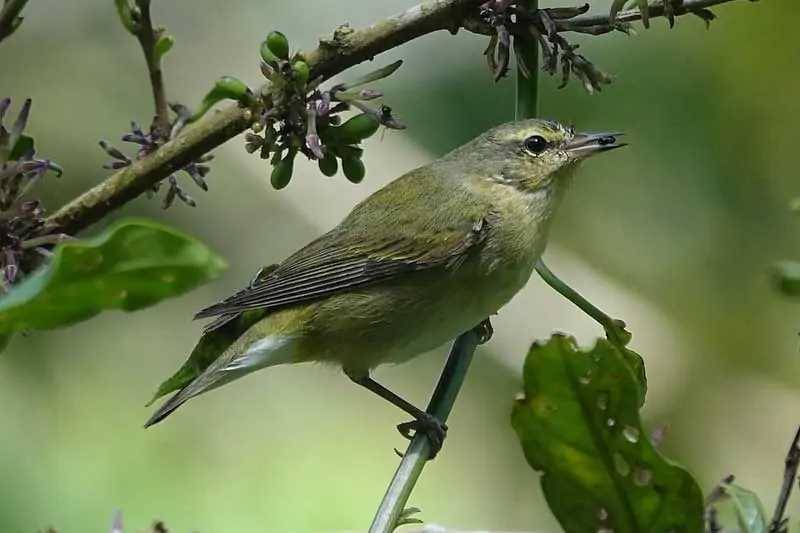
Scientific name:
Lives in: North America, Central America, the Caribbean, South America
Like most warblers, these birds are nervous and forage very quickly. During the breeding season, these birds form mixed flocks, but are solitary when nesting. Their habitat of choice includes coniferous forests, boreal bogs, as well as early successional woodlands. While spending their winters in tropical forests, they will drink flower nectar by piercing the base of the flower tube.
Fun fact about Tennessee warblers: Females build cup-shaped nests made from dried grass and moss while the inside of the nest is lined with softer grass, hair, and stems.
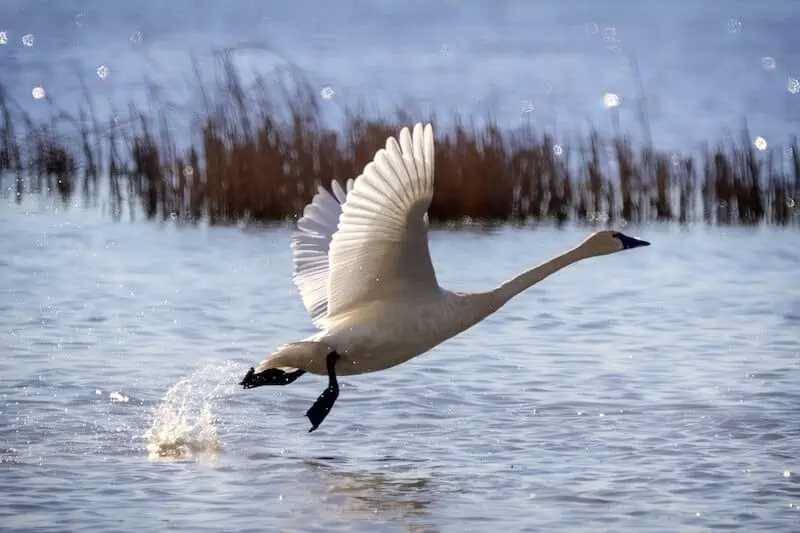
Scientific name:
Lives in: Alaska, Canada, scattered populations in northern U.S.
A beautiful all white swan with a long skinny neck and a black beak. The black of their beak extends back to their eyes.
Fun fact about trumpeter swans: With males weighing in at 26 pounds, they are North America’s heaviest flying bird.
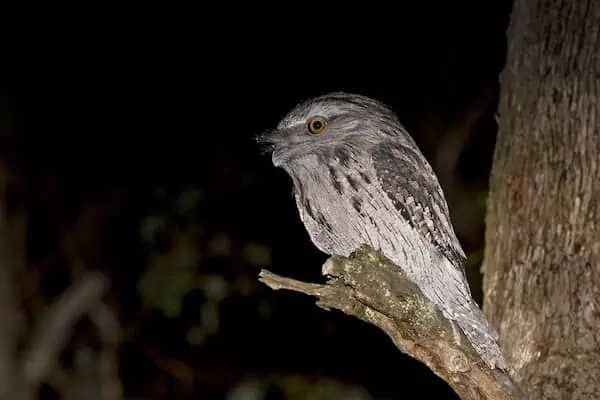
Scientific name:
Lives in: Australia, Tasmania
These birds were described in 1801 by an English naturalist named John Latham, with their squat neck and wide mouth giving them a frog-like appearance.
Fun fact about tawny frogmouths: Tawny frogmouths are an excellent example of mimicry in the wild, often camouflaging themselves against tree bark, almost completely undetectable.
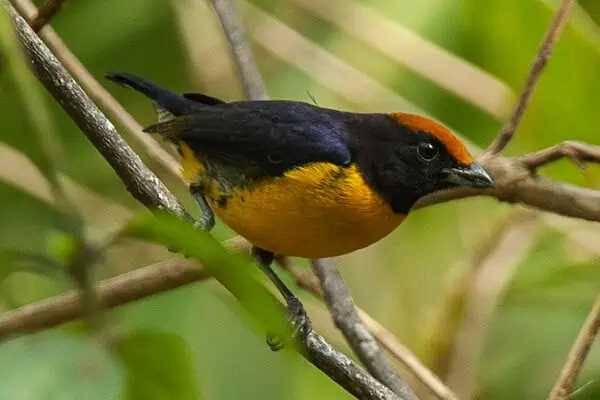
Scientific name:
Lives in: Columbia, Costa Rica, Panama
The Tawny-capped euphonia is a member of the bird family Fringillidae. Members of this family have short, conical bills well adpated for eating seeds and nuts. Its natural habitat includes tropical and subtropical moist montane and lowland forests, as well as degraded former forests. These birds are small and finch-like. Its entire crown is russet-orange against an otherwise dark head and back. Their chest and belly are yellowish-orange. These birds can often be found in pairs or in small flocks.
Fun fact about Tawny-capped euphonias: They are known for their near-constant singing. Their song can be described as “,” “” and “”ADVERTISEMENT
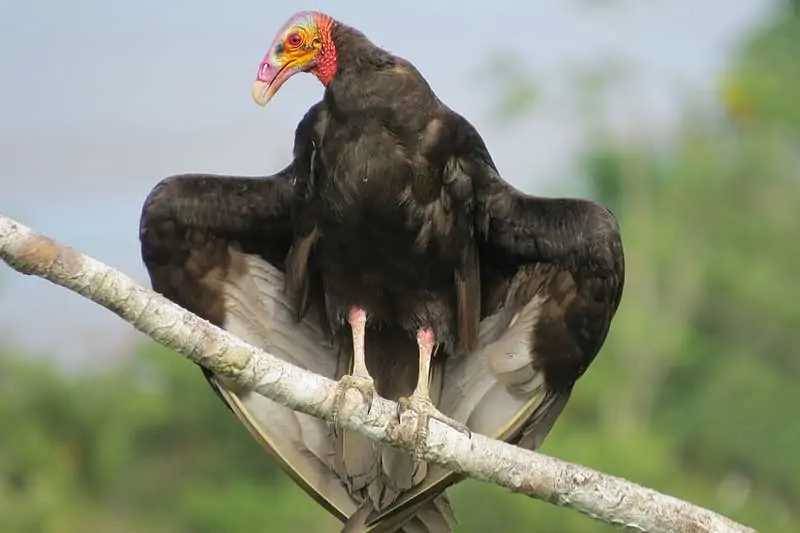
Scientific name:
Lives in: North, Central and South America
Turkey vultures are large scavengers. They have a dark brown body with white under their wings. Their pinkish head is featherless, which helps them to not have constantly dirty face feathers when sticking their heads into animal carcasses to eat. Vultures generally do not kill prey themselves, but rather sniff out animals that have already died or been killed by other predators.
Fun fact about turkey vultures: Researchers believe turkey vultures can smell carrion over a mile away.
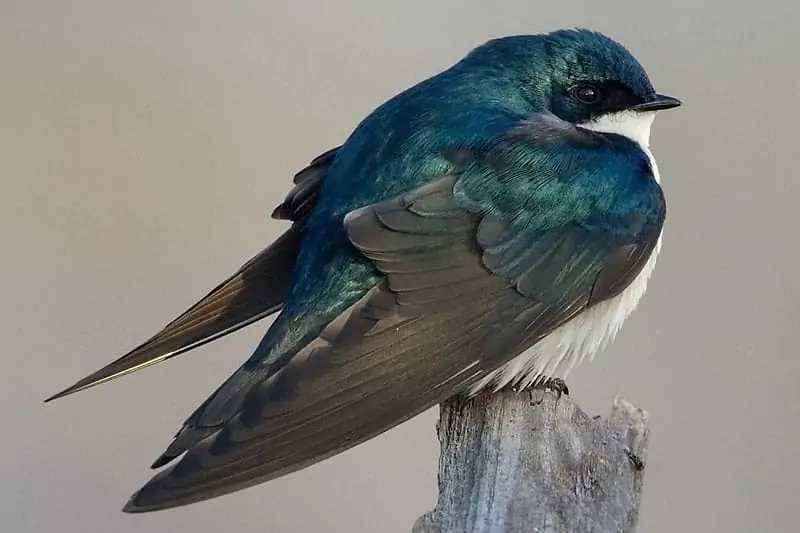
Scientific name:
Lives in: throughout North America, parts of Central America
Tree swallows often just look gray or black, however in the right light you can see they actually contains hues of metallic blue, green and purple. Their bellies are plain white. Swallows are amazing acrobatic fliers that can dive, twist and turn easily on their long wings to chase insects in the air.
Fun fact about tree swallows: Their name comes from the fact that they nest in tree cavities, but they will also use appropriately sized birdhouses.
